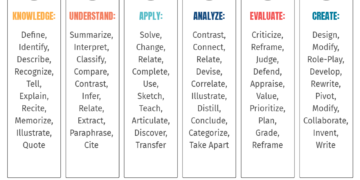@TeacherToolkit
In 2010, Ross Morrison McGill founded @TeacherToolkit from a simple Twitter account through which he rapidly became the ‘most followed teacher on social media in the UK’. In 2015, he was nominated as one of the ‘500 Most Influential People in Britain’ by The Sunday…
Read more about @TeacherToolkit
Do you find yourself filling up ‘dead time’ in lessons, meetings, and assemblies, or even in CPD events?!
Planning is a learning curve and teachers will often adapt methods handed down to them by their mentors or enforced by school policies.
How can teachers do less and achieve more?
As part of a developmental process, whether writing details down on lesson plans or adapting teaching in the moment, teachers can subconsciously find themselves doing more harm than good. This can also be the case in assemblies and when leading professional development events.
It is vital that teachers understand planning as a course of action, a process of unfolding learning into something that is accessible for those sitting in the classroom or assembly room.
More harm than good?
Recently, I encountered a lesson plan by a teacher, that concentrated more on completing ‘X number of ideas’ rather than the learning intention. It’s too easy for teachers to fall into this trap of keeping students busy, rather than focused on learning. I used to do this too!
This happens when teachers design curriculum and/or lesson plans on doing rather than on learning.
For example, you come across (or try to find) a good activity and then reverse engineer the lesson objectives to match the likely outcomes of the activity. Over time, this can become an exercise in keeping students busy and leads to more doing than learning.
Another example could be asking students to write three paragraphs or sketching four or 5 ideas rather than focusing in on the learning intentions. Let’s face it, students can achieve the same learning goals by sketching out one idea rather then four or five.
This is known as ‘Parkinson’s Law‘, first articulated in an essay published in The Economist in 1955. Parkinson’s Law is the old adage that work expands to fill the time allotted for its completion. Something I explain in greater detail in Mark Plan Teach to help teachers reduce workload.
Breaking down what you want students to learn can often reveal skills or knowledge they have to acquire and that need to be taught. As obvious as it sounds, your planning must first consider what students should learn before giving any consideration to what you want the students to do to reach this goal.
Throughout each stage of lesson planning, ask yourself ‘why?’ and connect the learning episodes with the intended outcomes in mind …
Great teachers focus on learning, not keeping students busy.




















